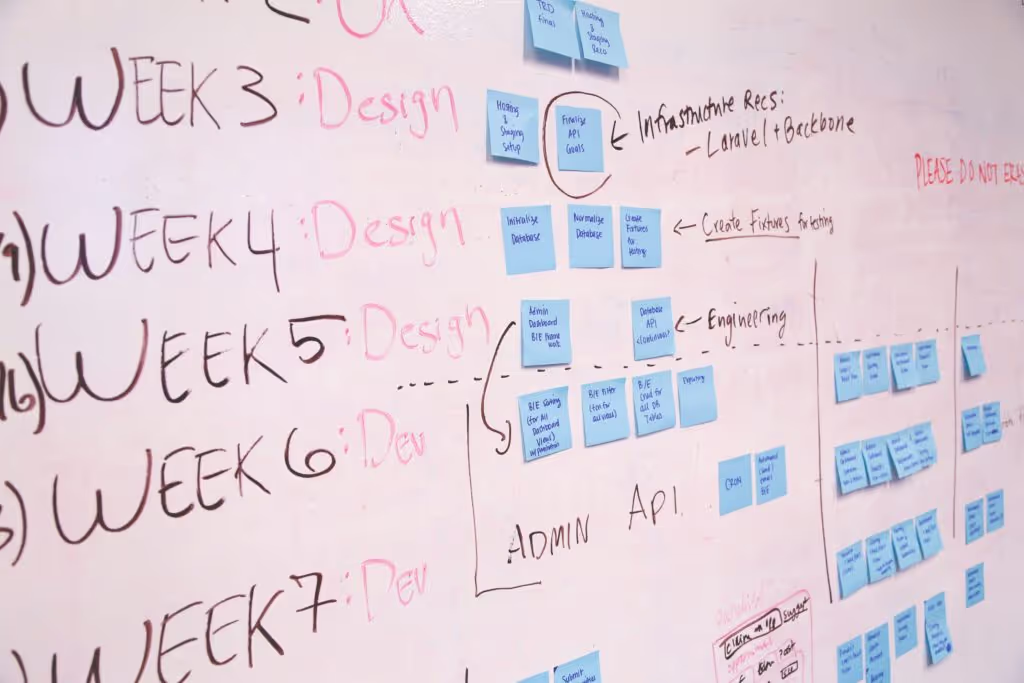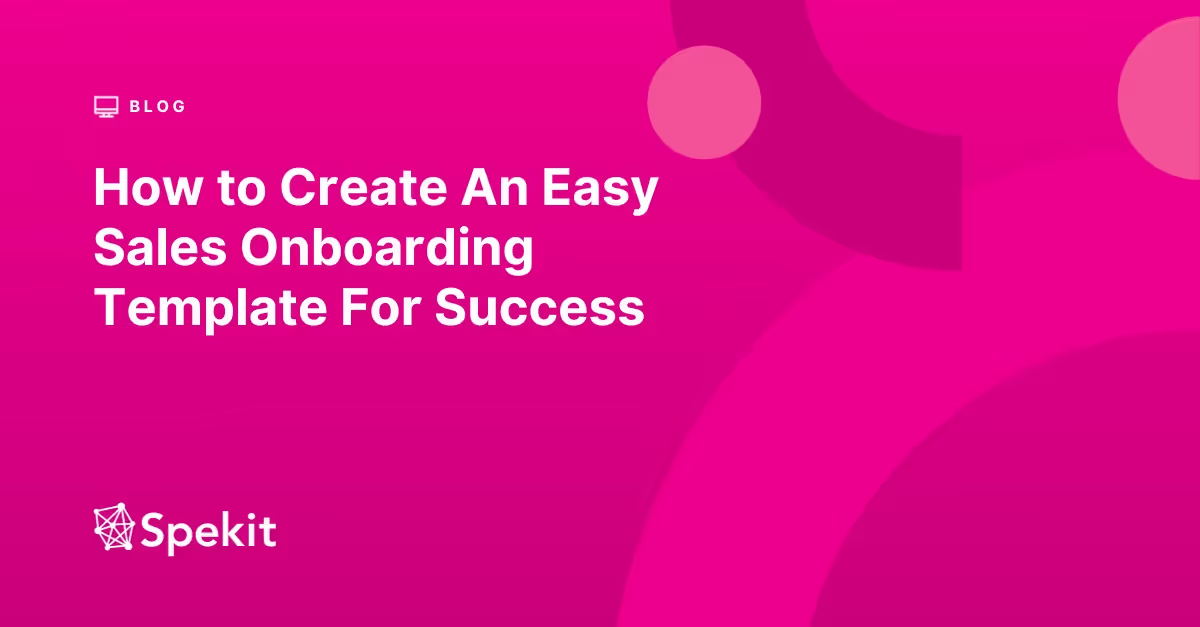When it comes to creating a plan that will make sales training successful, there is a lot to think about. How long will training take? Which sales tools will reps use? How can training feel more personalized? And this is just the beginning! To avoid getting lost in the details, many leaders turn to sales onboarding templates to create a solid plan.
Think of them like a sales onboarding checklist that offers step-by-step actions designed to reduce onboarding time and employee frustration. Below we’ll discuss how to create an easy sales onboarding template that simplifies the onboarding process.
Remote work, which has risen dramatically in the past few years, has made onboarding sales teams particularly challenging. Work locations are no longer a factor--with companies losing their competitive recruiting advantage--and to keep up with the times, company leaders must turn to digital training. This means many sales onboarding plans that rely on workers being physically present for sales training sessions, job shadowing, and meetings, are no longer effective.
On the plus side, remote work can be a boon to an organization, with statistics showing that remote workers are often more engaged in their work than their counterparts. The key to unlocking such potential is choosing a sales onboarding platform that takes the needs of remote workers and trainers into account.
Keeping it simple with the right tech
Sales onboarding plans don’t have to be complex to be effective. The most important rule is to create a strong foundation that anyone can follow and then maintain consistency across your organization. This helps all departments align to the same goals and head in the same direction.
During the planning phase, you’ll want to assemble your training teams , which typically consist of sales managers and decision makers who are familiar with digital adoption platforms and can champion your digital adoption platform efforts. After this, start evaluating various training software services but keep your sales enablement team as well as reps in mind. Choosing the right software is a vital step that can make or break every step of the sales onboarding process.
Next, look for onboarding technology that offers comprehensive walkthroughs, knowledge bases, tools to communicate real-time process changes, and access to immediate help. In-app, cloud-based tools are especially important in a remote world and across hybrid workforces.
Pro Tip: Training materials that are immediately ready as customizable, out-of-the-box content can help your teams get up and running quicker. If it’s easy to modify and can be located across a central repository, then onboarding will go much smoother. Such speed and ease will keep the training template simple in the early stages and make life easier for both reps and trainers alike.

Step one: prepare new and existing sales reps
When it’s time to train your reps, keep in mind that new reps often express during the hiring process that they want three things : access to specific information, supervision, and instant help. This information can include details about the product or service they are selling, how best to approach certain buyer personas, and knowledge about how to use sales tools to the maximum.
Giving your new sales hires the feeling of confidence in their jobs from Day One will reduce the chances of turnover. Show them that they will have access to everything they need, even while working remotely.
Effective onboarding software easily allows for sales leadership to still conduct training regardless of work location. Walkthroughs and demos are early tools sales trainers can use to show reps how a training platform will work. It’s even better if this information can appear within the flow of work so that reps can access answers to their questions without having to leave the workflow and waste time searching tedious databases.
After demos are complete, reps should have the chance to follow detailed and contextual walkthroughs that showcase the entire sales process. This provides ongoing reassurance that help, information, and supervision will always be available. Better yet, reps will realize they will have resources they need in real time, making learning seamless and quick. At the end of this preparation phase, they should have the confidence and knowledge necessary to begin making sales and close more deals.
Step two: onboard in real time
Typically, onboarding programs take months of effort and expense. But once preparation is complete and new reps are confident enough to get started, this second step should be easier for everyone involved.
Step two is when new reps begin working. At this stage, learning will continue and reps will now get hands-on experience with customers while immediate help is available right in the flow of work. Make it easy for them to access contextual information and sales enablement resources regardless of where they are in the sales cycle. Sales intelligence should be available at the click of a button or in an easy-to-find search tool rather than hidden in a large, disorganized database.
Contextual learning technology can also keep delivering information in small bits, on a per-needed basis, to avoid information overload. This is helpful to keep in mind as you update buyer personas, product releases, or incur process changes.

Step three: assess
Of course, even with the right learning management system delivering training and constant help to remote sales reps, ongoing assessment is necessary. This is a vital step in all onboarding processes, but it is often a sticky area for many company leaders. Assessment to some means monitoring remote workers, and many company leaders worry about the ethics of watching their employees .
Managers often spend too much time on this with the wrong software—such as webcams and other monitoring tools that can invade employee privacy and provide little information on productivity. With the right tech, however, performance appraisal can be a breeze. This step can even be carried out as employees onboard, saving valuable time. Think of monitoring as more of an assessment of the information they retained, or work toward specific goals rather than reviewing behavior.
Pro Tip: Make the assessment process fun and interactive, with quizzes that reinforce learning AND measure their knowledge base simultaneously.
Should any problems surface, trainers can easily edit or add new employee training content in one easy, convenient place. Ultimately a great learning management system will help trainers see how far workers have progressed and uncover how well reps are performing with various customers. Any skills or training gaps should be easy to find with built-in analytics.

Step four: reinforce and communicate new goals
Once employees have been prepared, onboarded, and assessed, it is time to move on to the last step of the sales onboarding template. Reinforcement and creating new goals should last for the life of the sales department. By constantly reinforcing learned material, a sales department can stay competitive and keep the reps empowered and productive.
In the past, reinforcement and new goals meant calling time-consuming meetings, sending emails, and carving out space for training sessions. Today, the cloud-based learning technology can make reinforcement a breeze that happens almost in the background.
Digital enablement platforms like Spekit make communicating new goals and process changes easy, even when remote, as it enables trainers and leaders to quickly communicate updates to training. These notifications, which are easy to create, instantly appear right in the workflow so that no sales rep misses a critical notification.
The right training software can supercharge success
In the age of remote work, many templates and steps for onboarding processes are no longer effective. The good news is that with the right training software, a fast and easy sales onboarding plan can be made, supercharging your chances for success. Want help creating your training template? Take a look at Spekit to see how we can help!







